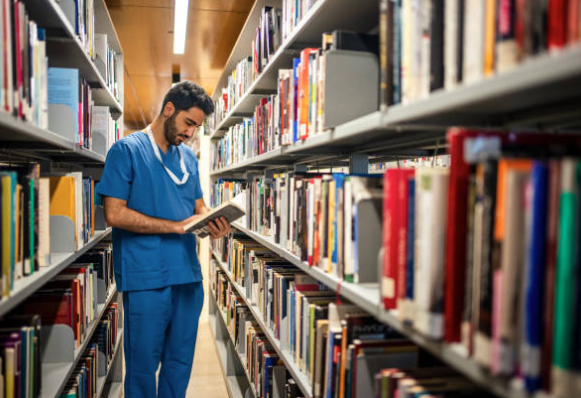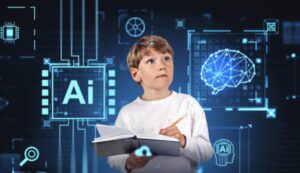
In an era marked by rapid technological advancement and changing student needs, campus libraries stand at a pivotal crossroads. The traditional role of the library as a quiet sanctuary of books is evolving into a dynamic, multifunctional hub essential for academic success and community engagement. This article delves into the core elements that transform a campus library from a mere repository of books into a thriving nucleus of learning and innovation. By exploring modern library management, technological integration, the creation of collaborative spaces, accessibility for disabled students, fostering a creative environment, and effective budget management, we unveil the secret ingredients that are essential to the success of contemporary campus libraries.
An Introduction to Modern Campus Library Management
The concept of the campus library has undergone a dramatic transformation in recent years. Gone are the days when libraries were seen merely as silent zones filled with stacks of books. Today, they are vibrant, multifaceted spaces that reflect the changing dynamics of learning and information dissemination.
In this digital age, the role of campus libraries is continually being redefined. They are now seen as centers for academic support, technological innovation, and community engagement, fundamentally shifting how they are managed and operated.
A question that often surfaces in discussions about modern libraries is, “Are libraries dying?” This query stems from the misconception that digitalization renders physical libraries obsolete. However, this is far from the truth. Instead of fading away, libraries are reinventing themselves. They have embraced the digital revolution, incorporating new technologies, digital resources, and library management software to enhance the learning experience. This evolution showcases their resilience and adaptability in a rapidly changing world.
Modern library management also involves understanding and meeting the diverse needs of the campus community. This includes creating spaces for individual study, group work, and leisure, ensuring that libraries serve a wide range of purposes.
Another significant aspect is the development of a skilled workforce. Librarians today are not just custodians of books but are information specialists, educators, and tech-savvy professionals who play a crucial role in guiding students and faculty members.
The integration of technology and the creation of flexible learning environments are also key components. This includes offering access to a wide range of digital resources and providing spaces equipped with the latest technology.
The modern campus library is a dynamic and integral part of educational institutions. It is a place where tradition meets innovation, creating a unique environment conducive to learning, research, and community building.
Technological Integration in Modern Campus Libraries
Technological integration in campus libraries is not just about having the latest gadgets; it’s about creating an ecosystem that supports digital literacy and access to information. This involves curating a wide range of digital resources, including e-books, online journals, and databases.
The role of technology in libraries extends to enhancing the user experience. Self-service kiosks, automated book returns, and digital catalogs make the library more accessible and user-friendly.
Another aspect is the provision of advanced tools and software for research and learning. This includes access to specialized databases, statistical analysis software, and digital collaboration tools that cater to the diverse needs of students and researchers.
The integration of technology also plays a crucial role in preserving and archiving academic work. Digital archiving solutions ensure that valuable research and historical documents are preserved for future generations.
Online platforms and mobile applications have made library resources more accessible than ever. Students can now access a wealth of information from anywhere, fostering a culture of learning beyond the physical confines of the library.
Technology in libraries is about preparing students for a digital future. By providing access to and training in the use of various technological tools, libraries play a pivotal role in equipping students with the skills needed in a digitalized world.
Creating Collaborative Spaces for Campus Students and Administrators
Libraries still matter in today’s day and age. The design of modern campus libraries heavily emphasizes collaborative spaces. These areas are designed to facilitate group work, discussions, and brainstorming sessions, reflecting the shift towards collaborative learning approaches in education.
Collaborative spaces in libraries vary in form and function. They include group study rooms, open areas with flexible seating arrangements, and technology-enabled spaces for presentations and video conferencing.
The layout of these areas is carefully planned to foster interaction while also providing the necessary technological support. This includes access to high-speed internet, multimedia systems, and digital whiteboards.
For administrators, these spaces offer opportunities for hosting workshops, seminars, and other community events. This not only enhances the library’s role as a learning center but also strengthens its position as a community hub.
The creation of these collaborative spaces requires careful consideration of the diverse needs of the campus population. They should be inclusive, accommodating different learning styles and preferences, and accessible to all members of the campus community.
Creating User-Friendly Experiences for Disabled Students
Ensuring accessibility for disabled students is a critical aspect of modern library design. This goes beyond physical accessibility to include digital accessibility and the provision of specialized resources and services.
Physical modifications, such as wheelchair ramps, adjustable desks, and tactile signage, are fundamental. However, accessibility also extends to the digital realm, with websites and digital resources being designed to be user-friendly for individuals with various disabilities.
Specialized equipment and software, such as screen readers, voice recognition systems, and Braille displays, play a crucial role in making information accessible to all students.
Staff training is also essential in this regard. Librarians and support staff must be equipped with the knowledge and skills to assist disabled students effectively and empathetically.
The goal is to create an environment where disabled students feel equally supported and empowered to access information and participate in library activities.
Creating a Useful and Creative Environment for All
The modern campus library is more than just a place for study; it’s a breeding ground for creativity and innovation. This involves creating spaces that inspire and facilitate creative endeavors.
This includes areas for quiet contemplation as well as zones designed for creative collaboration, equipped with tools and resources that spark innovation, such as 3D printers and multimedia editing software.
The aesthetic design of the library also plays a role in stimulating creativity. Thoughtful use of color, lighting, and art can create an environment that is both calming and inspiring.
Flexibility is key in library design. Spaces should be adaptable to accommodate various activities, from art exhibitions to hackathons, ensuring that the library remains relevant and engaging for all users.
The library’s collection also contributes to this creative environment. A diverse range of materials, including traditional books, multimedia resources, and digital archives, provides a rich source of inspiration for users.
Funding and Budget Management for Modern Libraries
Effective budget management is critical for the success of modern campus libraries. This involves not only securing adequate funding but also allocating resources in a way that maximizes their impact.
Funding for campus libraries comes from various sources, including institutional budgets, grants, and donations. Navigating these funding streams requires strategic planning and strong advocacy for the library’s role in education.
Budget allocation involves prioritizing needs, such as updating technology, expanding collections, and maintaining the physical infrastructure of the library.
Collaboration with other departments and external partners can be a cost-effective way to expand resources and services. This includes shared subscriptions to digital resources and joint events or workshops.
Transparency and accountability in budget management are essential. Regular reporting and evaluation ensure that the library’s resources are being used effectively to meet the needs of the campus community.
The transformation of campus libraries into dynamic, inclusive, and technologically advanced spaces is a journey that requires continuous adaptation and innovation. By focusing on modern management practices, technological integration, collaborative spaces, accessibility, fostering creativity, and effective budget management, campus libraries can remain vital centers of learning and community engagement. As they evolve to meet the challenges of the 21st century, campus libraries reaffirm their indispensable role in the academic landscape, enriching the lives of students, faculty, and the wider community.



